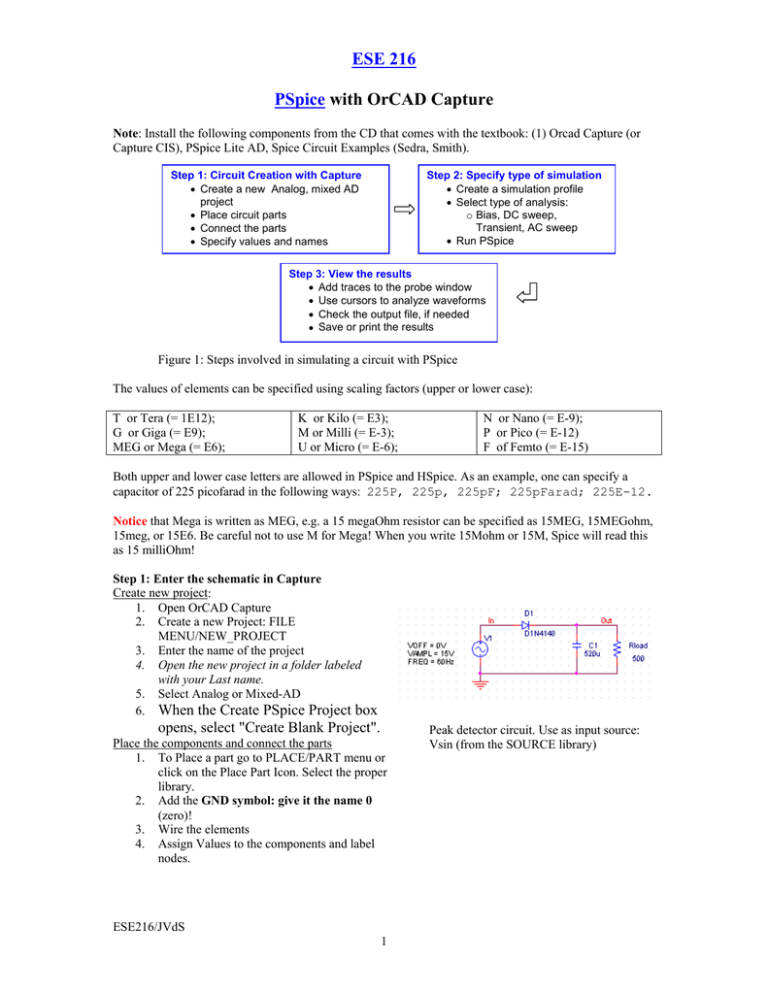

SPICE reads the net list and then performs the requested analysis: AC, DC, or TRANSIENT RESPONSE. Describe a circuit in a text file (“.cir” extension) called a netlist OR draw the circuit using graphical symbols on a schematic page.Ģ. TF command/statement causes the small-signal DC gain to be calculated by linearizing the circuit around the bias point.ġ. OP command can cause the small-signal (linearized) parameters of all the nonlinear controlled sources and all the semiconductor devices to be printed in the output file.

OP command causes detailed information about the bias point to be printed. Specifies the number of points in the sweep, using an integer. AC command calculates the frequency response of a circuit over a range of frequencies. TRAN command causes a transient analysis to be performed on the circuit and specifies the time period for the analysis. The DC sweep analysis calculates the circuit’s bias point over a range of values for. DC command performs a linear, logarithmic, or nested DC sweep analysis on the circuit. * Small Signal DC Transfer function (.TF) For a full fledged version or for more information, please contact Orcad. An evaluation (student) version, which can handle small circuits with up to 10 transistors, is freely available.

PSPICE : This popular version of SPICE, available from Orcad (now Cadence) runs under the PC platforms. It is a powerful program that is used in IC and board-level design to check the integrity of circuit designs and to predict circuit behavior. In short form we can defined it as- It is a general purpose analog electronic circuit simulator.


 0 kommentar(er)
0 kommentar(er)
